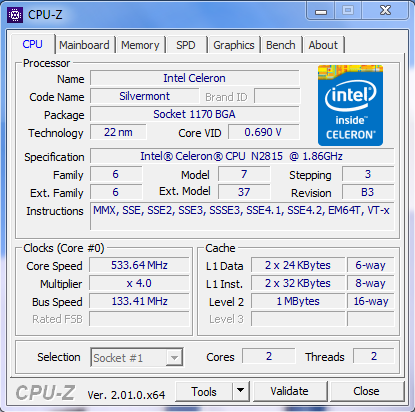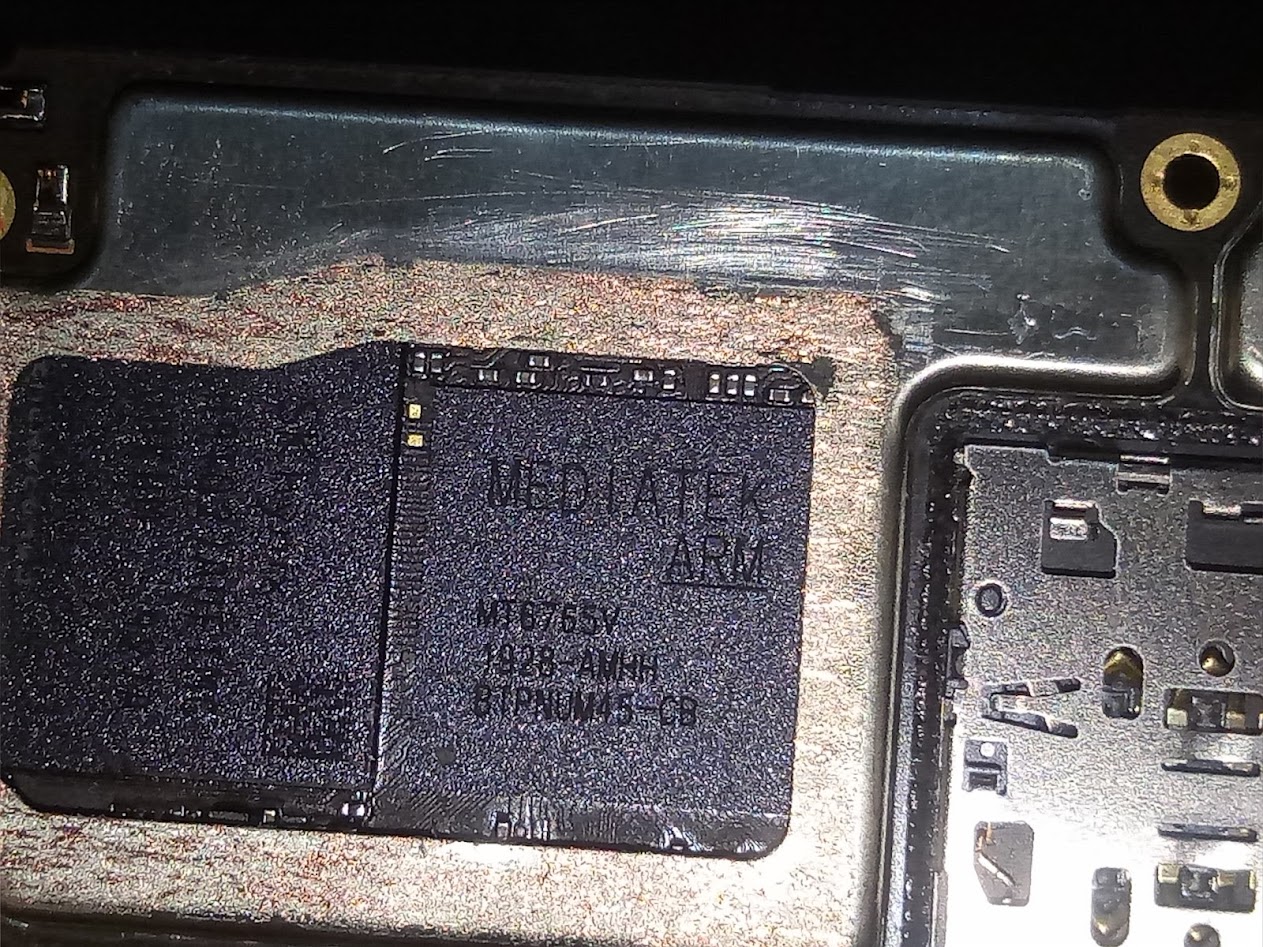Comparing: Intel Celeron N2815 vs MediaTek MT6765 Helio P35
In this comparison, we analyze two Processors: Intel Celeron N2815 and MediaTek MT6765 Helio P35, using synthetic benchmark tests to evaluate their overall performance. This side-by-side comparison helps users understand which hardware delivers better value, speed, and efficiency based on standardized testing. Whether you're building a new system or upgrading an existing one, this benchmark-driven evaluation offers valuable insights to guide your decision.

Intel Celeron N2815
| Type: | Processors |
|---|---|
| Brand: | Intel |
| Model: | Celeron N2815 |

MediaTek MT6765 Helio P35
| Type: | Processors |
|---|---|
| Brand: | MediaTek |
| Model: | MediaTek MT6765 |
Specification Comparison Table
| Specification | Intel Celeron N2815 | MediaTek MT6765 Helio P35 |
|---|---|---|
| Architecture | x86 | ARM |
| Technology | 22 nm | 12 nm |
| Clock | 1.86 GHz - 2.13 GHz | 1.8 GHz - 2.3 GHz |
| Core/Thread | 2 / 2 | 8 / 8 |
| Segmen | Mobile | Mobile |
Submission Comparison Table
| Benchmark Software | Intel Celeron N2815 | MediaTek MT6765 Helio P35 |
|---|
About Hardware Intel Celeron N2815
Part of the Bay Trail-M family, the Intel Celeron N2815 is a power-efficient processor released in 2013 for entry-level laptops and light computing devices. It has 2 cores and 2 threads, with a base clock speed of 1.86 GHz, which can increase to 2.13 GHz thanks to Burst Performance technology.
Built with 22nm fabrication, the Celeron N2815 has a TDP of only 7.5W, making it an efficient choice in power consumption. The processor also comes with Intel HD Graphics (Bay Trail), which has a clock speed of 313 MHz and can go up to 756 MHz. This GPU is sufficient for basic tasks such as 720p video playback and desktop viewing, but is less capable for gaming or heavy graphics tasks.
In terms of performance, the N2815 is sufficient for running light operating systems such as Windows 7 or Linux with basic applications such as browsing and Office. However, its architectural limitations and low single-threaded performance make it less responsive in multitasking or running heavy applications.
Hardware Detail:
-
Saturday, 07 May 2022 13:02:41 | Update: 1 week ago
About Hardware MediaTek MT6765 Helio P35
As the successor to MediaTek's previous series, the Helio P35 (MT6765) is a mid-range mobile processor released in 2018. It has 8 ARM Cortex-A53 cores, all running at a clock speed of up to 2.3 GHz, which provides a balance between performance and power efficiency.
Built with 12nm fabrication, the Helio P35 offers improved efficiency over its predecessors such as the MT6750. The GPU used is the PowerVR GE8320, which supports displays up to Full HD+ resolution, and has AI Processing Unit (APU) support to improve performance in image processing and facial recognition.
The Helio P35 is widely used in entry-level to mid-range smartphones due to its good efficiency in power consumption as well as its ability in light multitasking. However, in terms of gaming, its performance is limited for heavy games at low graphics settings.
Hardware Detail:
Devices: OPPO A5s & OPPO A15s.
Device Specifications: MediaTek MT6765, 3/32 (A5s), 4/64 (A15s), Android 8 (A5s), Android 10 (A15s).
Room Temperature: 30°C based on DHT11 Sensor.
I use the OPPO A15s device as an addition to the MediaTek MT6765 Helio P35 hardware, because some applications do not support devices with Android 8 version
Sunday, 08 September 2019 11:02:46 | Update: 1 week ago
